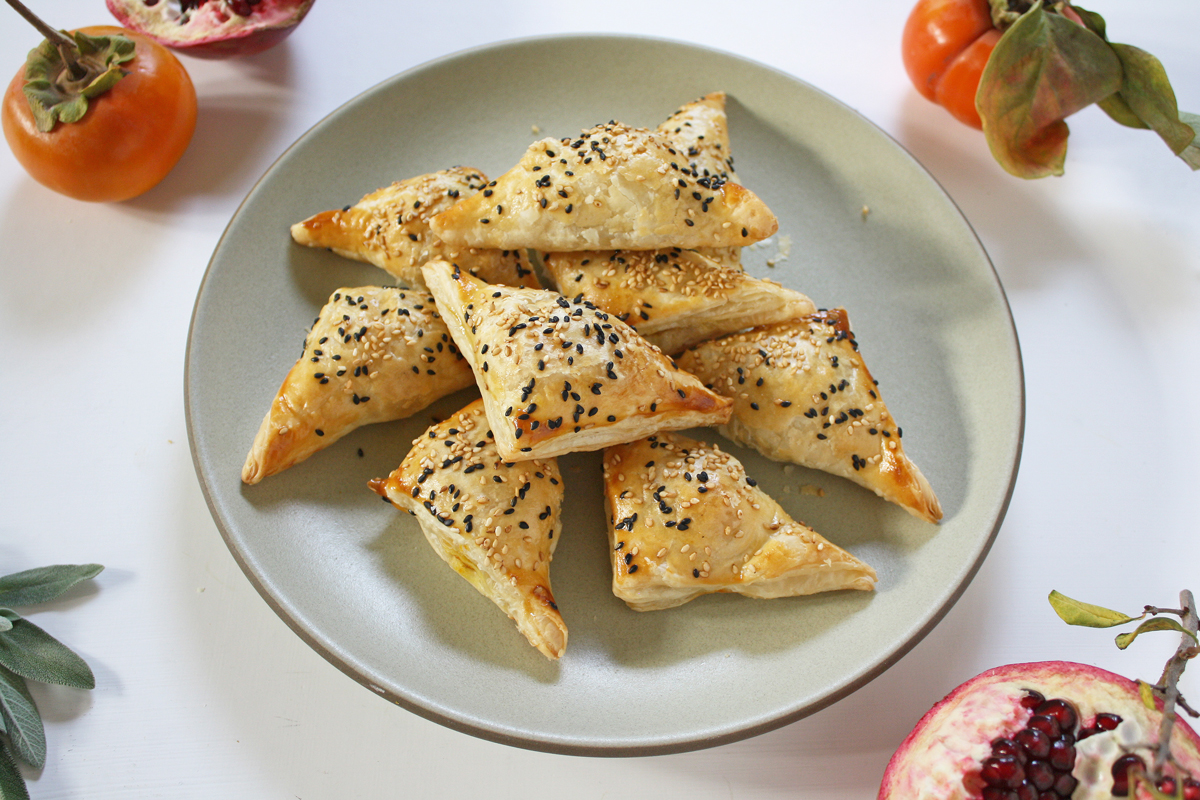Burekas are a stuffed pastry made with flaky layered dough that are an ideal appetizer or side for any holiday meal. They originated in Turkey where they’re called boreks and are made with phyllo dough, a dish that dates back to the Ottoman Empire. Sephardic Jews that were expelled from Spain adapted their burekas to be made with a hand-kneaded dough, like a Jewish empanada. Sephardic Jews are also the folks who brought this treat with them to Israel, where burekas are now a very popular snack and commonly made with puff pastry. Like many culinary things, the origin story of burekas is murky and the variations are widespread. You can find similar stuffed pastries from India, to West Asia, to Eastern Europe, to South America.
Whatever dough you’re using, burekas are all about layers. All you need is flaky layers of pastry that warmly encase some kind of rich filling. Burekas come in all shapes and sizes, from spirals to triangles to squares. Common fillings include feta and spinach, ground beef, potato, or cheese. Because you can fill flaky pastry with almost anything and it will taste good, bureka fillings are easy to adapt for different holidays and seasons.
This year, I wanted to make a bureka that could contain all the best flavors of fall, almost like a Thanksgiving-style Hot Pocket with a Jewish twist. These burekas are filled with hearty sweet squash, caramel molasses-like onions, woodsy thyme, sharp and poignant garlic, and some hidden heat from a pinch of cayenne. The puff pastry dough is buttery and crisp, adding that necessary subtle crunch to the soft filling. The sesame seeds on top are more than just garnish; they add that uniquely tahini-like note that goes so well with the natural honey flavor in the squash. You can make these vegan or dairy-free with non-dairy puff pastry, and omit the butter.
Full disclosure: even though you’re using store bought puff pastry, these take a little time to make. Don’t skip on caramelizing the onions, a process that takes longer than you might hope or plan for. Without the depth of savory flavor that comes from true caramelizing (not just browning), the squash filling can end up dull and one-note, like a sweet, bland, mushy pile of veg. The good news is that you can make the filling several days in advance. Even better, you can make the fully formed burekas days or weeks ahead of time, pop them in the freezer, and bake them off when you’re ready.
May your Thanksgiving be happy, abundant, grateful, and full of good food.
Butternut Squash and Caramelized Onion Burekas
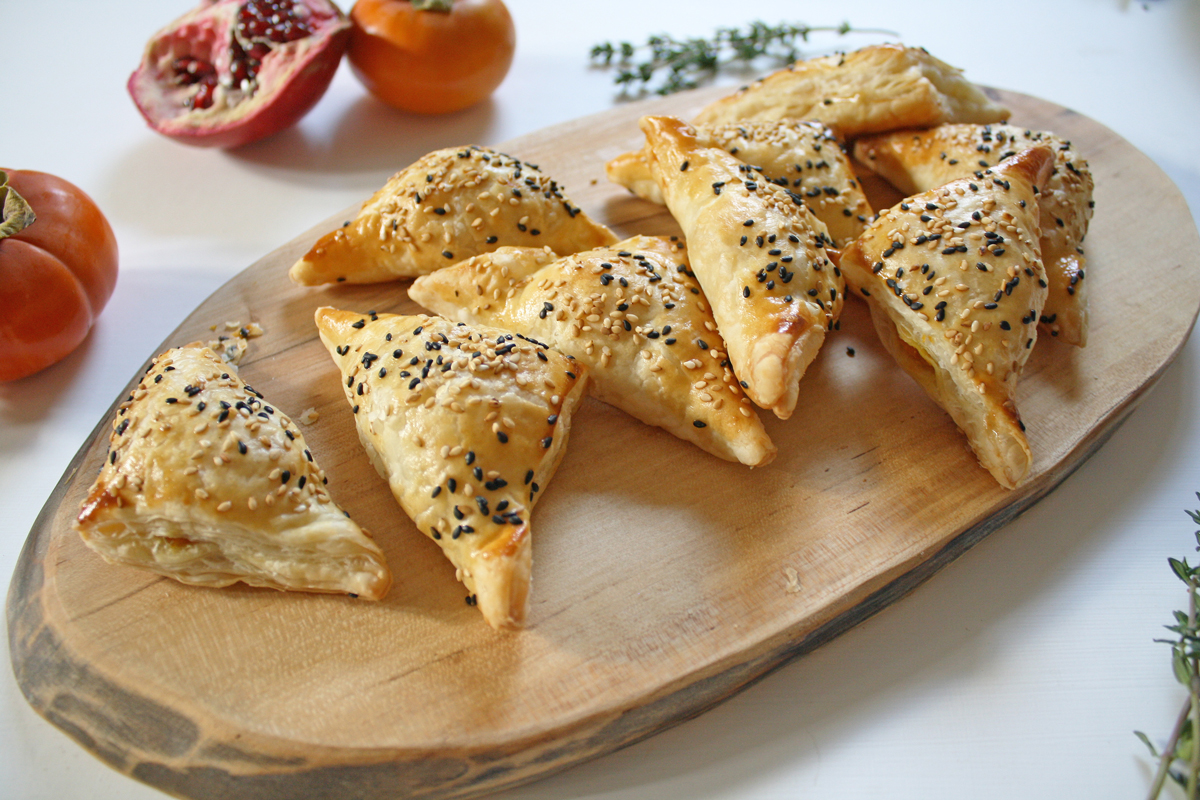
Makes 24 burekas
Ingredients:
2 sheets puff pastry (10” x 15”), defrosted in the refrigerator overnight
1½ lbs. butternut squash (1 large squash), halved lengthwise and seeds removed
1 large yellow onion, medium diced
2 tablespoons olive oil or butter
1 big fat clove of garlic or 2 medium-sized, minced fine
1 teaspoon ground coriander
2-3 sprigs thyme, leaves removed from stems
Pinch of cayenne pepper
Salt and pepper, to taste
1 large egg yolk
Black and/or white sesame seeds, to garnish
Directions:
1. Preheat the oven to 375°F.
2. Drizzle the halved butternut squash with oil, then place it cut-side down on a sheet pan. You don’t need to peel the squash. Roast until the squash is fully cooked and tender, about 35-45 minutes.
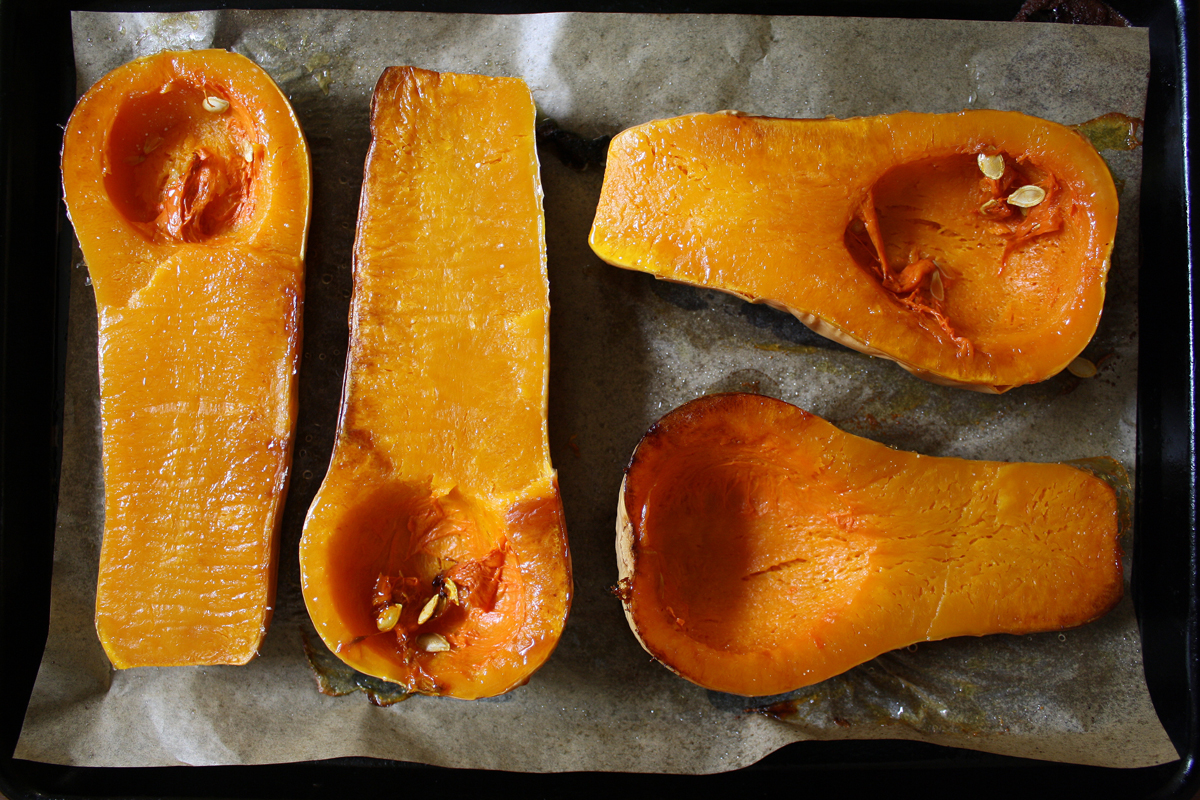
3. While the squash is baking, caramelize your onion by putting a few tablespoons of butter with a drizzle of olive oil in a sauté pan over medium low heat. If keeping the dish non-dairy, use just olive oil. Add the diced onion to the pan, and sauté over low or medium low heat until starting to soften, about 5 minutes. Season with a generous pinch of salt and then continue to let the onion cook and caramelize, stirring occasionally so the onion doesn’t burn; make sure to keep the heat fairly low. This is where patience comes in, beautiful caramelized onions can take 30-45 minutes to make. You want your onions golden and sweet, you don’t need to caramelize them until they’re a deep brown. This is a good tutorial if you need it.
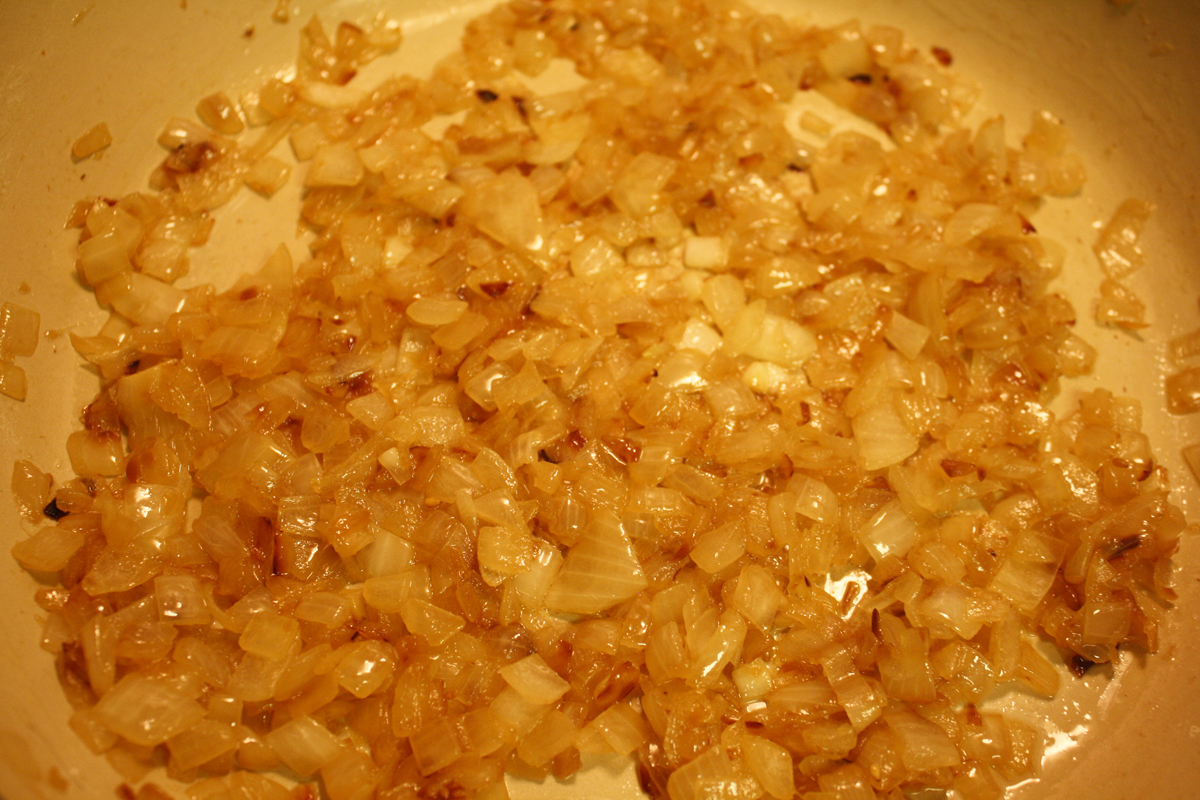
4. Add the minced garlic to the caramelized onions, and sauté for another 2-3 minutes or until the garlic is fragrant but not at all browned. Turn off the heat.
5. Once the squash is cooked and slightly cooled, scoop the inside of the squash into a bowl and discard the peel. Add the caramelized onion to the squash. Mix together. The mixture should be soft and not too lumpy.
6. Mix in the ground coriander, thyme, and cayenne. Taste, and then season with salt and pepper as desired. Allow the squash mixture to cool before assembling the burekas. You can make this filling up to two days in advance and store in the fridge.
7. To assemble the burekas: roll out a sheet of puff pastry until rectangular and just slightly thinner than when it comes out of the package. Divide the dough into 12 squares: cut the dough in half widthwise, and then cut each half into half again. Next, cut the dough into thirds lengthwise. Put a spoonful of the filling into each square. Fold over the dough to form a triangle shape, and press the edges together. There’s no need to crimp or press too hard, the filling will stay put, and you want to ensure there are layers of flaky pastry.
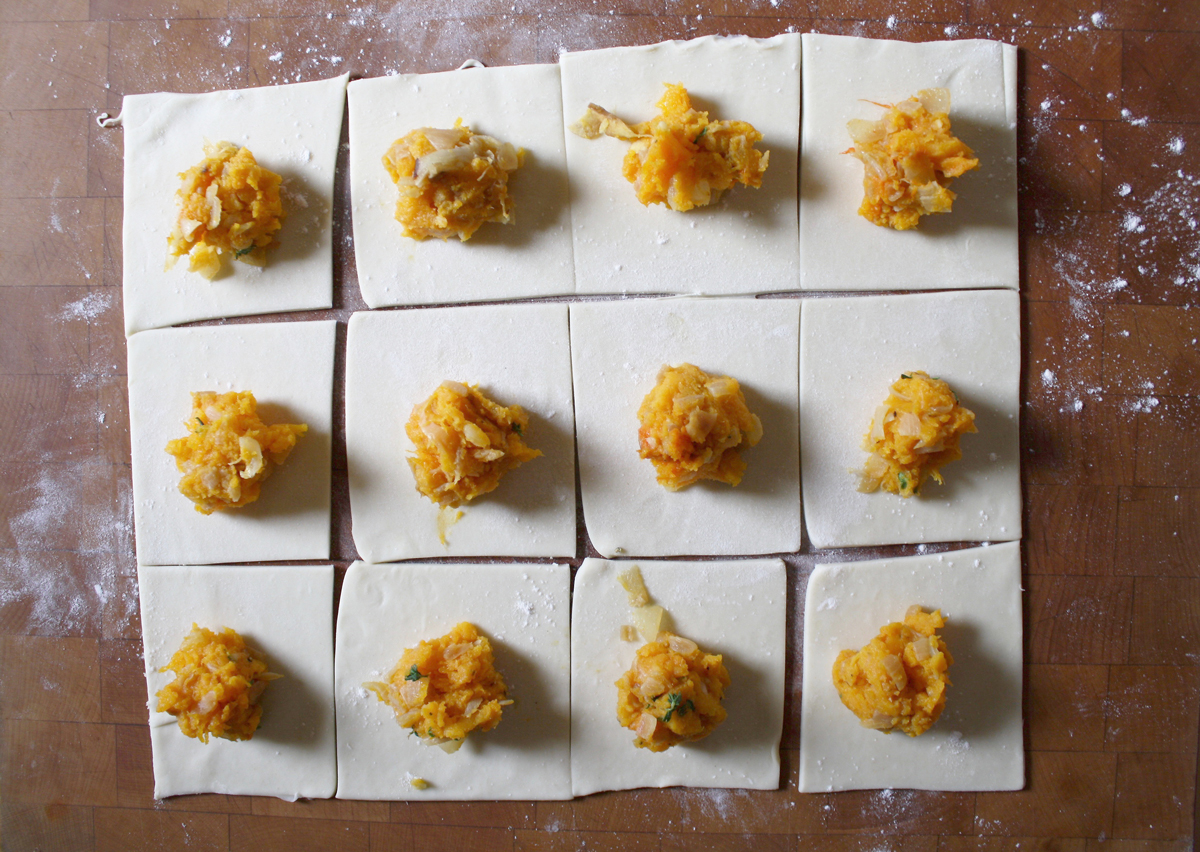
8. Transfer the formed triangular burekas onto a baking sheet, place each bureka about an inch apart, 12 will fit on each baking sheet. At this point, you can freeze the burekas and reserve them for when you’re ready to bake.
9. Before baking, combine the large egg yolk with a small splash of water. Beat well. Brush the tops of the burekas with the egg wash. Sprinkle with sesame seeds.
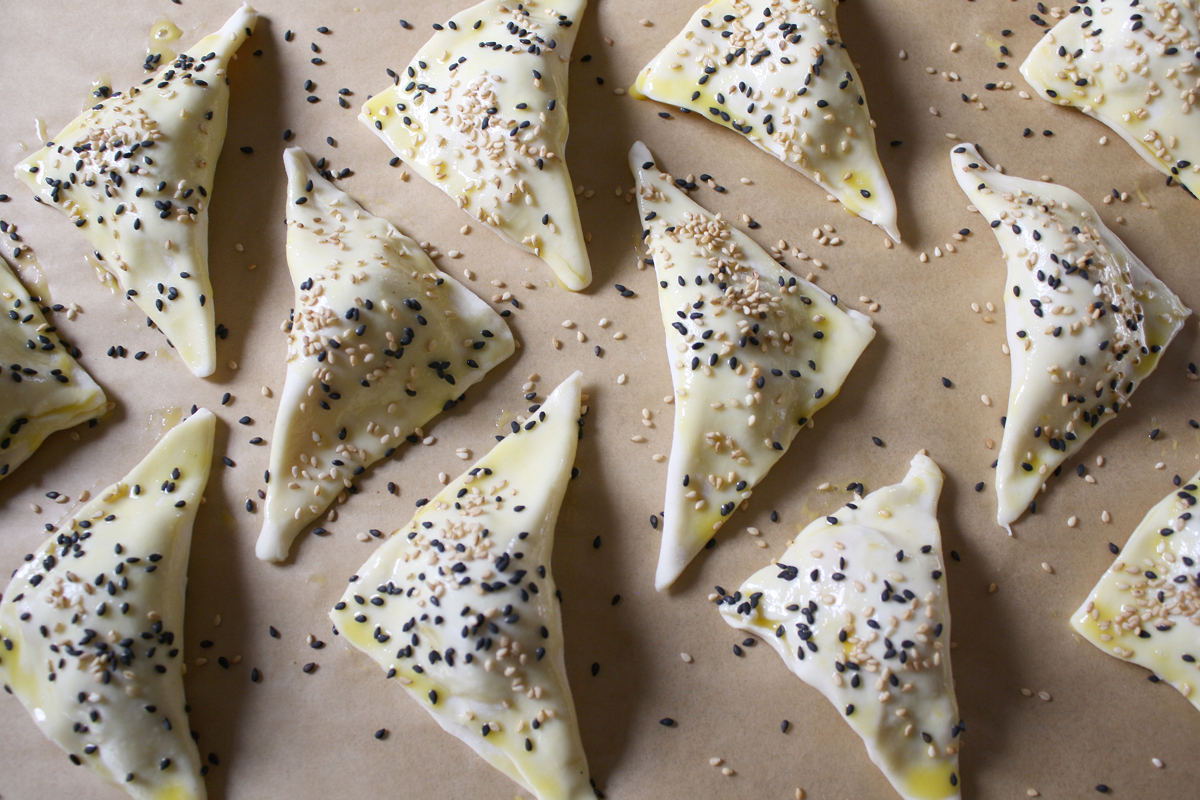
10. Bake for 20-25 minutes, or until golden brown and flaky. Transfer to a wire baking rack, and allow to cool for at least 10 minutes before serving. Burekas be served warm or at room temperature.
